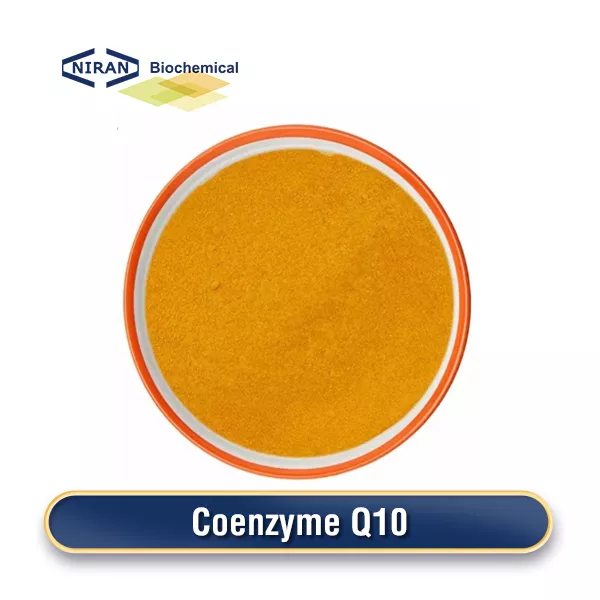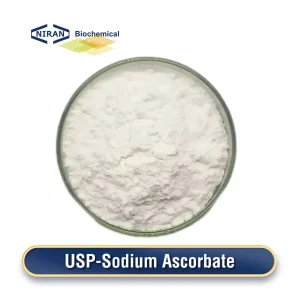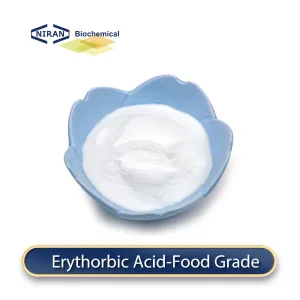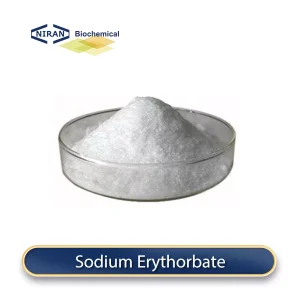What is Coenzyme Q10?
One substance that is found in cells naturally is coenzyme Q10. It appears as a yellow or orange-yellow crystalline powder, is odorless and tasteless, and is easily decomposed by light. It is hardly soluble in ethanol and insoluble in water. It has numerous uses in the food, cosmetics, nutritional supplement, and other sectors of the economy.
There are mainly the following methods for preparing Coenzyme Q10 in China:
1. The process of producing Coenzyme Q10 by specific microorganisms in a controlled fermentation environment. Microorganisms reproduce in suitable culture media and conditions to produce Coenzyme Q10, and then obtain a high-purity product through extraction and purification steps. This procedure is the standard for producing Coenzyme Q10 in China and offers the benefits of high production efficiency and outstanding product consistency.
2. The precursor of Coenzyme Q10 is synthesized by chemical reaction, and then the final product is obtained through further chemical treatment. This method can accurately control the reaction conditions and obtain high-purity Coenzyme Q10, but the cost is high and may involve complex environmental issues.
Related parameters:
| Items | Standards |
| Assay | 98.0%~101.0% |
| Melting Point | 48.0°C-52.0°C |
| Loss on Drying | ≤ 0.2% |
| Residue on lgnition | ≤ 0.1% |
| Ethanol | ≤ 5000ppm |
| Chromatographic Purity | |
| Coenzymes Q7,Q8, Q9,Q11, and Related Impurities | ≤ 1.0% |
| Ubidecarenone (2Z)-Isomer and Related | ≤ 1.0% |
| Obtained from Chromatographic Purity Procedures l and 2 | ≤ 1.5% |
| Heavy Metals | ≤ 10ppm |
| Lead (Pb) | ≤ 1ppm |
| Arsenic(As) | ≤ lppm |
| Cadmium (Cd) | ≤ 1ppm |
| Mercury (Hg) | ≤ 0.1ppm |
| Total Aerobic Microbial Count | ≤ 1000cfu/g |
| Total Moulds and Yeasts Count | ≤ 100cfu/g |
| Enterobacterial | ≤ 3MPN/g |
| *Salmonella | Negative/10g |
| *E.Coli | Negative/10g |
| *Staphylococcus Aureus | Negative/10g |
Recommended dosage:
| Food Name | Maximum usage(g/kg) |
| Nutritional supplement drinks | 0.5-1.0 g/kg |
| Sports drinks | 0.5-1.0 g/kg |
| Coffee | 0.1-0.5 g/kg |
| Milk tea | 0.1-0.5 g/kg |
| Fruit juice drinks | 0.1-0.5 g/kg |
| Chocolate | 0.1-0.3 g/kg |
| Protein powder | 0.5-1.0 g/kg |
| Biscuits | 0.1-0.3 g/kg |
| Canned food | 0.1-0.3 g/kg |
| Sauce | 0.1-0.3 g/kg |
| Dairy products | 0.1-0.3 g/kg |
| Fermented beverages | 0.1-0.3 g/kg |
| High-protein drinks | 0.5-1.0 g/kg |
Coenzyme Q10 has a wide range of uses
1. Coenzyme Q10 plays a key role in the mitochondria of cells, supporting the energy needs of cells by participating in the electron transport chain to help generate ATP (the main energy currency of cells).
2. The substance has strong antioxidant properties, which can neutralize free radicals, reduce damage to cells caused by oxidative stress, and protect cell membranes and other biomacromolecules from oxidation.
3. It is essential for maintaining heart health, helping to improve heart function, reduce symptoms of heart failure, and support normal blood pressure levels.
4. Coenzyme Q10 boosts immunity and promotes energy levels, which bolsters the body’s resistance to disease.
5. The body’s concentration of coenzyme Q10 falls with age. Supplementing with Coenzyme Q10 may help slow the aging process and improve skin health and energy levels.
User asked question:
Q: What are some substances that can replace the function of Coenzyme Q10?
A: 1. Strong antioxidant vitamin E helps prevent oxidative damage and neutralize free radicals. It is essential in defending against oxidative stress on cell membranes and promoting cardiovascular health. Vitamin E is often used in health supplements and skin care products to provide antioxidant protection and improve skin condition, and has similar antioxidant functions to Coenzyme Q10.
2. Niacinamide, also known as vitamin B3, is an antioxidant substance that can reduce skin inflammation, improve skin texture, and support cellular energy metabolism. To support healthy skin and prevent the effects of age, it is frequently utilized in skin care products. Although its energy support function is not as powerful as Coenzyme Q10, it has similar effects in antioxidant and skin health.




